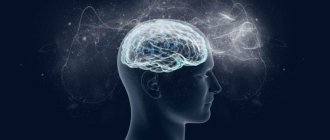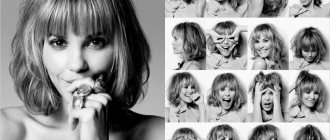What is “character”
In psychology, character refers to the totality of a person’s personal qualities that are formed as they grow older and are most clearly manifested in personal and public life. As a result, a specific style of behavior is formed in different life situations.
Psychologists divide character traits into 4 groups. This division is based on a person’s attitude to various aspects of life.
- Towards other people – isolation or sociability, deceit or truthfulness, respect or arrogance, etc.
- Towards oneself – modesty or vanity, arrogance or self-criticism, pride or humility, etc.
- To work – hard work or laziness, conscientiousness or carelessness, etc.
- To things – neatness or sloppiness, thrift or wastefulness, neatness or negligence, etc.
Since the main personality traits are formed in social life, the main aspect for understanding a person’s character is his relationships with other people. A person's character is also judged by his temperament. But it is important to distinguish between these concepts.
Personality formation - advice for parents
Many people are interested in the question of whether character changes. Indeed, personal qualities are formed and change throughout life. The process begins in early childhood. The first individual traits of a child appear already in preschool age; parents can identify a certain way of behavior and attitude towards the world.
If you want to raise your child with a strong personality, to develop perseverance, courage and endurance in your child, involve him in group games with a certain plot and rules.
How to build character and teach a child to work and responsibility? From childhood, assign simple tasks to your child, gradually complicating them. Thus, the child develops discipline, self-control, behavior is determined, and the baby learns to evaluate his actions and decisions. Thus, self-education occurs.
A new stage in personality formation begins when a child enters school, when his ability to communicate with classmates and perform new responsibilities is demonstrated. As a result of a change in environment and lifestyle, the child develops organization, accuracy, and hard work.
It is important! In childhood, the personality of the baby is influenced by the character of the parents and their habits. At school, the main role in character development is played by the school community - classmates, teachers.
A child’s character is revealed through the following areas during school:
- organization and systematicity;
- determination and perseverance;
- accuracy and hard work;
- discipline;
- consciousness of duty and responsibility to the school community;
- collectivism and camaraderie.
In adolescence, personal characteristics develop most actively, because at this age the child is attracted to adult life, and higher demands are placed on him. Feelings such as duty, responsibility, participation in the collective life of the class manifest themselves more consciously.
It is possible to change a child's character. Psychologists note that there are no children whose personal characteristics could not be re-educated. However, the process requires the participation of a specialist who can identify character flaws and select the most effective strategy for further action.
How is temperament related to a person’s character?
A person’s character is a combination of his personal qualities, which can change and depend on the social environment in which the individual lives and develops. Temperament is an innate reaction to external stimuli. It does not change and remains constant throughout a person’s life.
Knowing the type of temperament, you can better understand the character of a person. However, a pronounced temperament is extremely rare. Most often, people have a mixed temperament, in which there will definitely be a dominant one.
It is customary to distinguish the following 4 types of temperament; on our website there are detailed articles devoted to each of them.
- Choleric. It is characterized by sudden changes in mood, emotional outbursts, impetuosity, passion, and imbalance. The nervous system of choleric people is characterized by unstable functioning. When a choleric person gets very involved in something, he very quickly uses up his own energy and becomes exhausted.
- Sanguine. This is the most sociable and lively of all temperament types. He needs new impressions, quickly reacts to events happening around him, and takes his own failures and other troubles lightly. When a sanguine person is interested in work, he works very productively and with great enthusiasm. In the opposite situation, he becomes frankly bored and is absolutely indifferent to the result.
- Phlegmatic person. He is distinguished by his equanimity and slowness. A phlegmatic person shows feelings extremely sparingly. He is constant in his preferences and habits and does not tolerate any changes. A phlegmatic person prefers monotonous work, which he performs diligently and without rushing.
- Melancholic. This is the most sensitive and vulnerable type of temperament. A melancholic person reacts sharply to various events and is prone to strong emotional experiences. With a favorable upbringing, melancholic people turn out to be outstanding figures in the arts and sciences.
If you can no longer change your temperament, then you can work on your character. First, you need to determine your character type and key traits.
Handwriting
Graphology is a science that studies all the diversity of handwriting. It says that there are no absolutely identical handwritings, but all of them can be conditionally combined into certain groups according to certain criteria. As it turns out, people with similar characters have similar ways of writing signs and letters.
Absolutely everything affects the characteristics: the size of the letters, their shape, slope, distance between them, spaces between words, pressure on the paper, indentation from the margins.
- The size of the letters speaks of the openness of nature. If the letters are large and sweeping, then you have a creative person in front of you. Such people are usually impulsive, quick to act, pay little attention to details or advice, and are more interested in the goal. By nature they are warriors, rebels, who disagree with society. But small symbols speak of a person’s secrecy, the closedness of the soul. Such natures are very stubborn, have good mental analysis skills, are friends with the exact sciences, but prefer their company to a crowd of people. Very small letters indicate scrupulousness, even greater secrecy and detachment.
- The shape of the symbols characterizes the social character of a person. Owners of angular icons are most often stubborn people who disagree with other people's opinions. They fight for their complete independence from others, but at the same time they are very faithful in friendship. Those who prefer smooth transitions and roundness of symbols are soft, warm-hearted natures. They are always ready to lend a hand to someone in need, they know how to calm and give advice. People who combine different forms are ideal inhabitants of society, since they combine vital energy with kindness and strength of mind.
- Pressure on paper plays an important role when analyzing characteristics. So strong pressure is typical for choleric people, who like to constantly prove something, argue, keep promises, and set goals. And dim letters on paper speak of uncertainty and anxiety of melancholic people.
- Spaces between words, as well as margins, indicate the ability to share. Greedy people can produce handwriting with small spaces and indentations from the margins, it seems as if they feel sorry for the paper. Large indentations indicate the generosity of nature.
Classification of character types
Scientists and psychologists have identified a large number of criteria for determining character type. I'll tell you about the main ones.
Typology according to Kretschmer
German psychologist Ernst Kretschmer classified character types depending on a person’s physique and identified 3 main ones.
- Picnics. People of this type of physique are prone to being overweight and even obese; they are rarely above average height. They have a small head with a short neck, a wide face with small features. They correspond to a character type called cyclotomy. These are people who are characterized by emotionality, sociability, who easily make contact and quickly adapt to changing conditions. The most common mental illness is manic-depressive psychosis.
- Asthenics. These include people of thin build, weak muscles, long arms and legs, and a long face. The character type of asthenics is schizothymic. They are characterized by stubbornness, seriousness and isolation. With mental disorders they are prone to schizophrenia.
- Athletics . These people are tall, broad-shouldered, muscular with a strong skeleton. The character type of athletes is ixothymic. They are characterized by restraint in facial expressions and gestures, calmness and restraint, authority and practicality. They do not like change because they do not adapt well to it. The most common mental disorder among athletes is epilepsy.
It is interesting that people of the same race have similar character traits. Thus, the Swedish professor Anders Retzius introduced the concept of the Nordic character, which was possessed by representatives of the Germanic race. These are tall and slender people with blue or gray eyes and light ash hair. They are persistent, cool-headed, reserved, reasonable and very observant. They know how to remain calm in any situation.
Typology according to Jung
Carl Gustav Jung is a Swiss psychiatrist who developed a typology of character, which is based on the predominance of a person’s internal or external world. He identified 2 types of people.
- Introverts. These are closed people, turned to their inner world. Such people are focused thinkers. They isolate themselves from the outside world, analyze everything carefully, and prefer loneliness. They have few friends, it is difficult for them to make new acquaintances and change their habits. They are characterized by suspiciousness and increased anxiety.
- Extroverts. These are sociable, sociable, open people. They have a lot of friends and acquaintances, they cannot stand loneliness, they love to travel and live to the fullest. They always become the life of the party, initiating meetings and parties.
Typology according to Lowen
American psychoanalyst Alexander Lowen compiled his typology of characters based on defensive patterns of human behavior. In total, he identified 5 types.
- Oral. Representatives of this type of character depend on the opinions of others and are afraid of being abandoned and rejected. They are characterized by strong dependence on other people, constantly in need of love, care and support, but they themselves are not ready to do anything.
- Masochistic. People with this type of character tend to complain, engage in self-flagellation, love to suffer themselves and torment other people. Everything that causes displeasure to others brings pleasure to the masochist. He doesn't trust anyone, often hates everyone and harbors a grudge.
- Hysterical. This type of character is characterized by reckless outbursts of emotions and theatrical behavior. Women of the hysterical type are distinguished by their overt coquetry, which is expressed in their gait, speech and gaze. Lack of discharge as a result of excess energy leads to anxiety. However, such people cannot remain in a state of balance for a long time. They perceive calmness as a boring and gray life and try in every possible way to recharge themselves, deliberately getting into various ambiguous situations.
- Narcissistic. This type of character is characteristic mainly of men. Its representatives are energetic, ambitious, self-confident and often arrogant. They achieve success in their professional activities, persistently achieve their goals, and are sexually attractive to the opposite sex. Their distinctive features are also pressure, aggressiveness and fight.
- Schizoid. People of this type of character are divorced from reality and cannot adequately express their emotions. They know how to love, but this feeling will not last long, since attempts to maintain contact cause strong internal tension in a schizoid person, which causes a break.
People who 100% fit the description of a particular character type are quite rare. Most often, character traits are intertwined and none stands out too clearly.
What is accentuation
When individual character traits are overly enhanced, this is called character accentuation. From a psychological point of view, this condition is an extreme variant of the norm, and not a mental illness. However, at the same time, some character traits are sharpened and expressed so strongly that they lead to personality disharmony.
This feature leaves an imprint on a person’s behavior and actions, which is reflected in all areas of relationships: to oneself, to other people, to work, to things. Character accentuation is most common among adolescents. Thus, among the surveyed young people, 95% were found to have accentuation of varying degrees of severity. But among the older generation, the proportion of people with accents dropped to 60%. Because with age it is possible to smooth out undesirable character traits.
How are strengths different from weaknesses?
Wit
All weaknesses can become strengths if you look at them from a different angle. For example, a person is restless. If he works as a sales manager or sales representative, then this is rather a plus rather than a minus.
Another example is non-conflict. Getting along is considered a positive character trait. On the other hand, there are people who simply need to be put in their place, and this sometimes requires going into conflict.
Regardless of gender and activity, there is one universal character trait that is strong in any case. Unfortunately, it is not inherent to everyone. This is a sense of humor. A witty person can always get out of a difficult situation. Such people are usually respected and people try to be friends with them.
Important! Wit often borders on sarcasm, sometimes on cynicism. Care must be taken because it is a very fine line.
Character types with accentuation
Many scientists and psychologists have studied accentuation and tried to classify character type depending on this phenomenon. The typologies of A. E. Lichko and K. Leonhard gained the most popularity.
Classification according to Leonard
Karl Leonhard in his work “Accented Personalities” identified 10 main types and several intermediate ones.
- Hyperthymic – sociable, optimistic, energetic, proactive type of accentuation. Hyperthymic people are luck-oriented. They are characterized by developed facial expressions, a desire for active activity and new experiences. Often people of this type are irritable and frivolous.
- Disthymic is a closed, pessimistic person with a heightened sense of injustice. A dysthymic person feels discomfort in noisy companies. He has few friends, but he values them very highly. He is characterized by inhibition and low speed in decision making.
- An excitable person is a conflict-ridden person who is very difficult to communicate with. It is difficult for him to get along in a team, and in the family he behaves imperiously.
- A stuck person is a suspicious, intractable and touchy person. Such people love to teach others and often become the initiators of conflicts. They tend to place high demands on both themselves and others.
- Demonstrative - a self-confident, vain, boastful and hypocritical person. Such people love to weave intrigues and can easily adapt to any situation. They are characterized by artistry, courtesy, out-of-the-box thinking and self-centeredness.
- An anxious person is a timid, submissive, insecure person. He is characterized by self-criticism and friendliness. However, the lack of inner strength and will often makes such people the subject of ridicule and jokes. For the same reason, they try to avoid conflicts. And if they still had to get into an argument, they will look for support from others.
- Emotive – emotional and soft-hearted type of people. They are characterized by compassion and depth of feelings. They react sharply to everything that happens, but do not express their feelings, but accumulate them within themselves.
- Pedantic - an indecisive type of people who are afraid to lead, pay a lot of attention to little things and will never miss the opportunity to grumble. They are characterized by a fear of inconsistency with their own invented ideals.
- Exalted is a sincere, altruistic and impressionable person. Such people react violently to current events. From joyful events they easily become enthusiastic, and from sad events they become sad and even fall into despair. At the same time, they clearly express their emotions.
- Affectively labile is a type of accentuation in which a person is characterized by frequent mood changes. Therefore, when communicating with people, the way a labile person behaves can differ radically. Either he is hyper-communicative, or on the contrary, he is so withdrawn that you can’t get a word out of him.
Classification according to Lichko
Andrey Evgenievich Lichko identified the following types of accentuations.
- Hyperthymic is an energetic and sociable person who is constantly in a high mood. He cannot stand loneliness, monotonous surroundings, monotonous work, or idleness. He is characterized by a desire for risk, a frequent change of hobbies, as a result of which he does not complete the work he has begun.
- Cycloid is a type of accentuation characterized by cyclical changes in mood. For example, an elevated mood gives way to depression. Such changes do not occur abruptly and last up to about 2 weeks. People of this type are quite sociable and cheerful. However, during periods of low mood, they tend to give up on things.
- Labile is a sociable, good-natured and sincere person, whose main feature is a sharp and rapid change of mood. A labile person experiences severe mental pain when lost or separated from loved ones. He needs support and love. He likes to be in the role of a ward.
- Epileptoid is a scrupulous, meticulous, overly pedantic person. He is characterized by authoritarianism. He has a hard time experiencing material losses and insubordination of his personality. Sometimes he falls into periods of angry and irritable tension, during which he looks for an object to vent his anger. When intoxicated, he becomes angry and aggressive. Most often found in guys.
- Hysterical is an egocentric, communicative and proactive type of character. People of this type crave to be the center of attention. They are quite artistic, easily get used to any role they come up with, and are capable of self-deception. Most often, this type of character manifests itself in girls.
- Psychasthenic – self-critical, prone to introspection, but at the same time a reliable person. It is difficult for him to make decisions and take responsibility for himself and others. He is characterized by prudence and an even mood.
- Schizoid is a closed and taciturn person. It is difficult for such people to establish emotional contacts. Their inner world is closed to others. Alcohol helps schizoids make contact with other people easier and makes them more confident.
- Hypochondriacal – a serious, stubborn, withdrawn person. Has a tendency to increased fatigue and irritability. This type of person experiences sudden outbursts of rage over insignificant reasons.
- Sensitive - timid, shy, shy type of people. They tend to show kindness and mutual assistance. In difficult situations, they withdraw into themselves, become cautious and suspicious.
- Unstable - sociable, open, helpful, lazy person. Loves entertainment and idle pastime. They strive to get rid of someone's control. They have a tendency to drink alcohol and drugs.
- Conformal – a friendly, non-conflict, disciplined type of person. They strive to be “like everyone else.” They have a hard time experiencing changes in life and changes in their usual environment.
When accentuation becomes a pathology
On the one hand, an accentuated character trait can make a person successful, but on the other hand, it is his weak spot. Thus, people of the hysterical type can become talented actors. However, they are very afraid of ridicule and, in a negative situation, are prone to demonstrative suicide.
Therefore, there is always a high risk that in difficult situations, accentuation will develop into neurosis or psychopathy and become the cause of alcoholism, drug addiction, and crime. The reasons for the manifestation of character accentuation can be both hereditary factors and the characteristics of the child’s upbringing.
Features and methods for determining psychotype
Determining the psychological characteristics of a person for certain purposes is the responsibility of a separate branch of psychology - psychological diagnostics. To determine psychotypes, various methods are used: tests, questionnaires, conversations.
Psychological consultations provide a specific person with knowledge that helps them better understand a certain situation, as well as adjust their actions in it. Modern psychology has a number of studies that make it possible to determine psychotypes by appearance, habits and a number of other characteristics.
Psychodiagnostic methods are classified according to several parameters:
By type of task:
- projective;
- multifactorial;
- accentuation;
- physiological;
- effective.
By form:
- blank;
- computer;
- sensory.
To address:
- conscious;
- unconscious.











